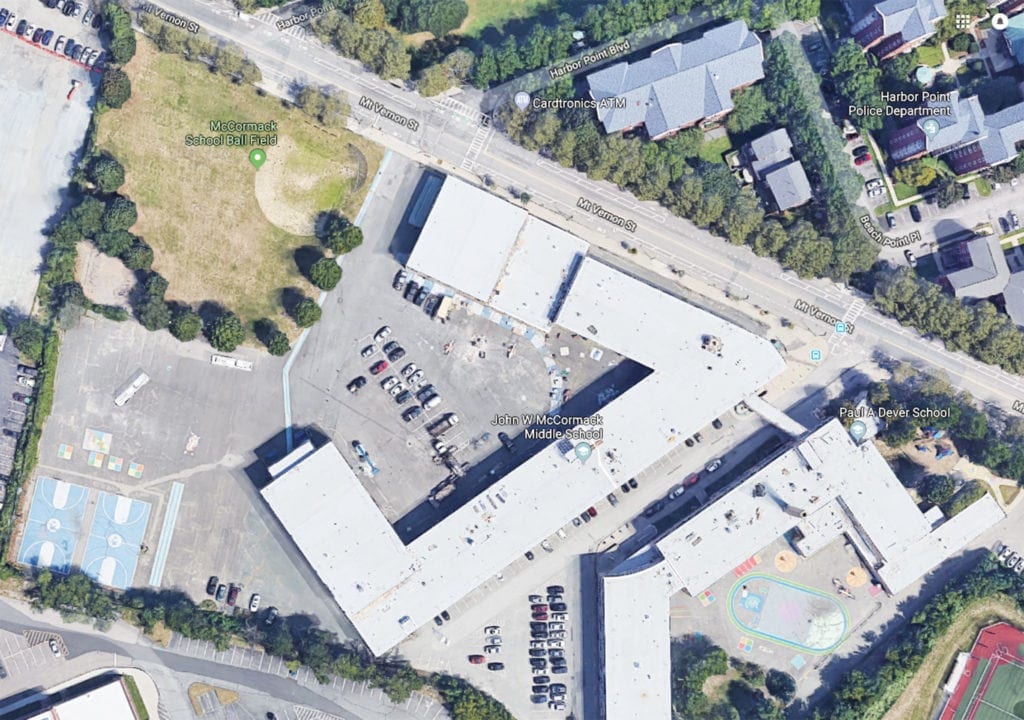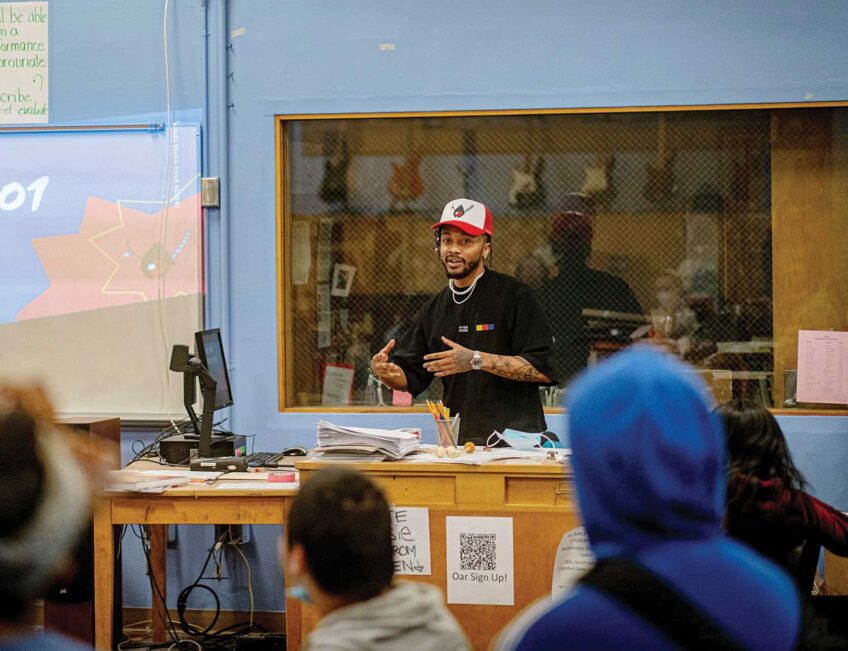
Back in April, when a Boston Public Schools official presented the Boston School Committee with a proposal to sell off a portion of the land adjacent to the McCormack Middle School in Dorchester, the plan was billed as a precursor to future public-private partnerships that could maximize public assets.
Under the plan, outlined by BPS Managing Director of External Affairs Makeeba McCreary, BPS would partner with an external entity, such as a Boys & Girls Club, to develop the land as a recreational space. The city’s Department of Neighborhood Development would issue a request for proposals for the redevelopment of the land, either as athletic fields or as an indoor facility.
In the weeks since the proposal was unveiled during an April 11 School Committee meeting, opposition has gained steam and a coalition of civil rights organizations, parent groups and student groups sent a letter to Superintendent Tommy Chang, Mayor Martin Walsh and the School Committee demanding a moratorium on facilities-related decisions.
In the letter, the organizations ripped the city’s $1 billion BuildBPS school renovation and reconstruction planning process, citing what they said is a lack of inclusion of students, parents and community members in decisions.
“The so-called ‘community planning committees’ facilitated by BuildBPS have fallen far short of what is needed to give key stakeholders a sense of meaningful participation in a process critical to the future of our schools,” the letter reads.
BPS officials declined to comment on the letter.
During the April 11 School Committee meeting at which she outlined the proposal for the McCormack lot, McCreary said the plan could exist outside of the BuildBPS process.
“In spite of anything we would be doing through BuildBPS, which as you know is an ongoing conversation … we could actually make decisions about this piece of land separately without impacting any future decisions,” she said.
Public-private partnerships
McCreary presented the plan to sell the McCormack parcel as a way to maximize use of existing BPS assets.
“This is an example of a way that we can take advantage of existing space and think about public-private partnerships in a really impactful way,” she said.
But a student from the McCormack School, testifying during a May 23 hearing, said the land is currently being used for recreation by students and members of the surrounding Harbor Point community.
“This is an open space that gives us the opportunity to play outside, to get fresh air and sunlight,” said Amanj Omar, a seventh-grader at the school and a Harbor Point resident.
Students play on the basketball courts and use the playing field for baseball, soccer and cricket, Omar said. He echoed the complaints of parent groups that they were excluded from discussions about the land before the plan to sell it was introduced.
“We the students of the McCormack Middle School have not been part of the discussion, which is very concerning,” he said.
Open questions
The proposed sale of the land sparked a wider set of questions about the BuildBPS process, which the Walsh administration launched in 2016. In May and June of last year, BPS held a series of neighborhood workshops, during which city officials outlined the planning process for BuildBPS and solicited comments, concerns and ideas from parents, students and other community members.
The plan, which seeks prioritize renovations and new construction for the district’s 125 school buildings, could pave the way for the construction of new school buildings and re-purposing of school buildings, as well as school closures and consolidations. Chang and other BPS officials have indicated that the district may move away from middle schools toward a model where high schools serve students in grades 7-12, as is the case with the city’s three exam schools.
The city and school department have been largely silent about the BuildBPS process in the years since the 2017 meetings. During the meetings last month about the McCormack schoolyard, School Committee members pressed BPS officials on the BuildBPS process.
“Do we have a sense of when we’re going to have a full proposal on BuildBPS?” School Committee member Michael O’Neill asked Superintendent Tommy Chang.
Chang said BPS would be announcing a 30-member engagement advisory group which will include teachers, school administrators and community members to “provide advice on the next phase of engagement.”
Chang said the city is considering more than 300 recommendations for facilities changes and upgrades. BuildBPS will bring the recommendations back to the community for review, he added.
When O’Neill pressed Chang again on a timeline for BuildBPS, Chang would not provide a clear answer.
“We do not have an exact timeline on it,” he said. “Our goal is, hopefully in the next 12 months we’ll have to bring these recommendations back to the community.”
O’Neill cautioned that the city should administer the BuildBPS process with greater transparency and speed.
“The longer we go with this, the greater potential we run of squandering the goodwill and the interest of folks involved in this.”







